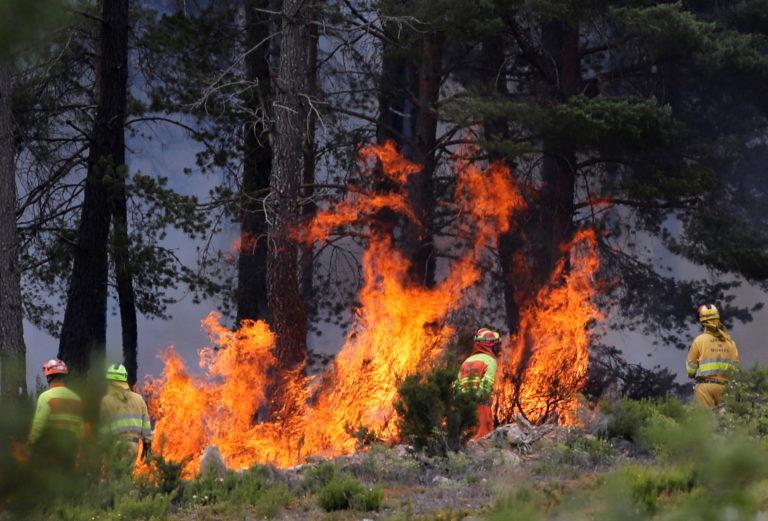Spain is grappling with a severe wildfire crisis as multiple blazes continue to ravage thousands of hectares across the country. Authorities have declared a state of heightened alert, mobilizing firefighting resources and emergency services to contain the rapidly spreading fires amid soaring temperatures and dry conditions. Communities remain on edge as efforts intensify to protect lives, property, and Spain’s vulnerable landscapes. This developing situation underscores the growing challenges posed by climate change and the urgent need for effective prevention and response measures.
Spain Battles Devastating Wildfires Amid Rising Temperatures and Drought Conditions
Across Spain, emergency services are grappling with a deadly combination of soaring temperatures and prolonged drought, resulting in multiple wildfires that have consumed vast stretches of forest and agricultural land. Regions such as Valencia, Catalonia, and Andalusia are among the hardest hit, with thousands of hectares already reduced to ash. Authorities have deployed hundreds of firefighters and aerial units to contain the blazes, while precautionary evacuations are underway to protect vulnerable communities. The extreme weather conditions are exacerbating fire behavior, with dry winds spreading flames rapidly and complicating containment efforts.
Key factors fueling the crisis include:
- Record-breaking heatwaves pushing daytime temperatures past 40°C (104°F)
- Extended periods without rainfall, intensifying drought severity
- Accumulated dry vegetation acting as tinder for the wildfires
- Shifting wind patterns accelerating fire spread unpredictably
Experts warn that climate change continues to increase the frequency and intensity of such emergencies. Below is a brief overview of the wildfire impact across affected regions:
| Region | Hectares Burned | Evacuations | Firefighters Deployed |
|---|---|---|---|
| Valencia | 5,200 | 1,300 | 450 |
| Catalonia | 3,800 | 900 | 370 |
| Andalusia | 4,500 | 1,100 | 400 |
Emergency Services Mobilize Resources to Contain Blazes and Protect Communities
Firefighting units across the affected regions are working around the clock to halt the rapid spread of the wildfires that have consumed vast areas of forest and farmland. Specialized aerial support, including water-bombing helicopters and planes, has been deployed alongside ground crews to tackle the blazes from multiple fronts. Authorities have also enlisted the help of the military to assist with evacuation and logistical operations, emphasizing a coordinated multi-agency approach to safeguard vulnerable populations and critical infrastructure.
In addition to immediate firefighting efforts, local governments have initiated precautionary measures to minimize further damage. These include:
- Establishing emergency shelters for displaced residents
- Issuing air quality warnings and health advisories
- Closing access to high-risk areas and national parks
- Mobilizing community volunteers to support relief efforts
| Resource | Quantity Deployed | Role |
|---|---|---|
| Firefighters | 1,200+ | Ground fire suppression |
| Helicopters | 15 | Water bombing & reconnaissance |
| Fire Trucks | 60 | Transport and ground fire attack |
| Military Units | 300 | Evacuation & logistical support |
Experts Urge Immediate Climate Action and Enhanced Fire Prevention Strategies
Environmental specialists and policy makers across Spain are calling for urgent reforms to mitigate the escalating wildfire risks that have devastated vast expanses of the country’s forests this season. They emphasize the critical need for strengthened fire prevention protocols, including enhanced surveillance technologies, community awareness campaigns, and tighter land use regulations. Experts warn that without immediate intervention, such blazes will not only continue to intensify due to rising temperatures and prolonged droughts but also severely impact biodiversity, air quality, and rural livelihoods.
Key recommendations from recent studies suggest implementing:
- Advanced remote sensing tools for early fire detection and rapid response coordination.
- Integrated forest management combining controlled burns with reforestation efforts.
- Community-driven fire prevention training in vulnerable regions.
- Investment in firefighting infrastructure such as water reservoirs and access roads.
| Prevention Measure | Current Implementation Status | Expected Impact |
|---|---|---|
| Remote Sensing Technology | Moderate | Faster Fire Detection |
| Controlled Burns | Limited | Reduced Fuel Load |
| Community Training | Emerging | Improved Preparedness |
| Infrastructure Investment | Insufficient | Enhanced Fire Response |
The Conclusion
As Spain continues to battle a series of devastating wildfires that have already consumed thousands of hectares, authorities remain on high alert. With firefighting teams working around the clock and evacuation measures in place for affected communities, the situation underscores the urgent need for coordinated disaster response and preventive strategies amid increasingly severe fire seasons. Euronews will keep monitoring developments and provide updates as efforts to contain the blazes continue.




